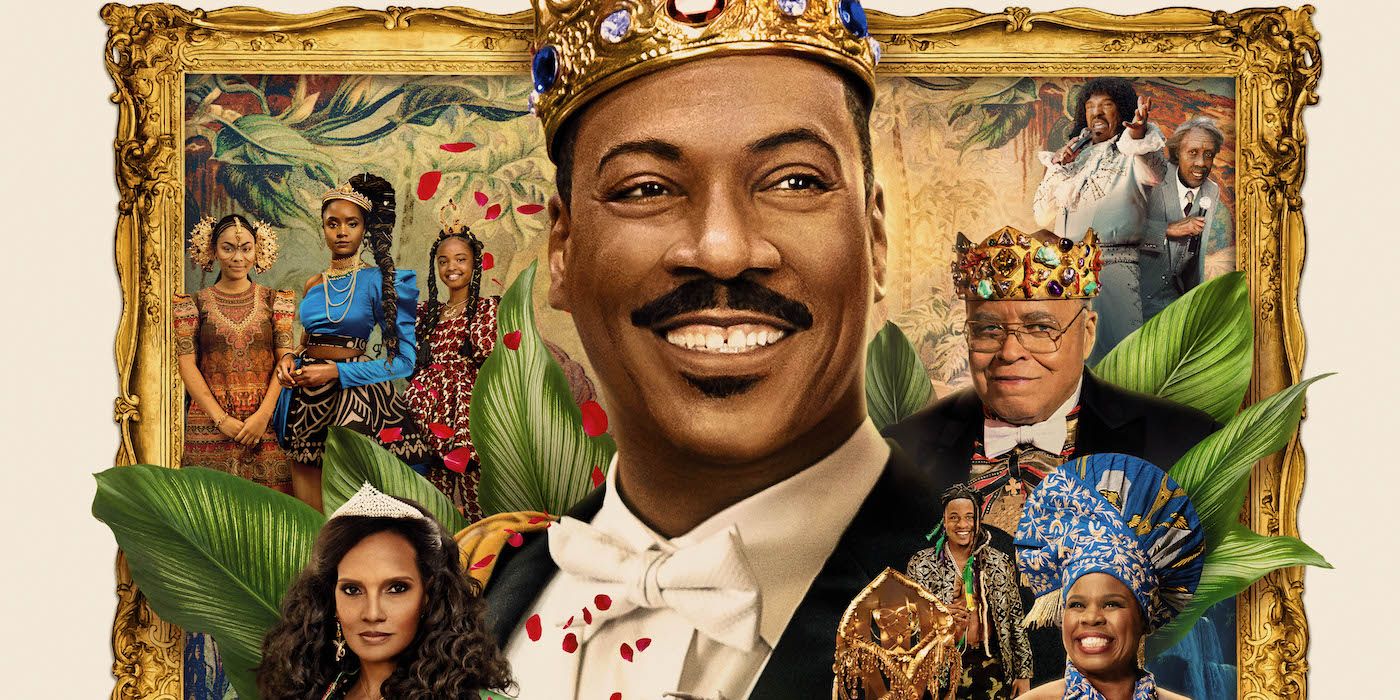When the announcement was made that a sequel to the 1988 box office hit, Coming to America was going to be released, there were some positive expectations from the audience of this Black Hollywood movie classic as well as a disappointment that a work of such seeming perfection is about to be damaged. One factor that made the anticipation big is the star-studded cast list. The original has some nostalgic value. It captures a different era, but it is a culturally significant movie. The links between African stories and Hollywood were not as deep as they are now and the pushback against stereotypical portrayals of Africa was not as rife. Long before the imaginary country of Wakanda in Marvel’s Black Panther, there was Zamunda, a prosperous African country whose prince visited Queens in New York in search of his own queen.
In the 1988 original, Prince Akeem (Eddie Murphy) was engaged to a princess from Nextdoria but he was uninterested in the relationship as he wanted to marry a woman of his own choosing. The king, unconvinced, resisted this but the intervention of the Queen saved the day and he eventually married his American lover, Lisa (Shari Headley). The sequel has a similar story and it is set 30 years after Prince Akeem’s marriage to Queen Lisa. King Jaffe Joffer (James Earl Jones), now old and dying, wants Akeem to locate a previously unknown son he sired on a drunken night in New York. Shocked by this, Semmi (Arsenio Hall), Akeem’s friend and aide confessed his complicity in the situation and they both return to New York in search of the son. The sequel is centered on this son who is named Lavelle (Jermaine Fowler) who was brought to Zamunda as the heir to the throne. He is betrothed to Bopoto (Teyana Taylor), a princess from neighbouring Nextdoria whose king had threatened to oust Akeem if his daughter is not married to the heir of the Zamundan kingdom. Just like his father 30 years earlier, Prince Lavelle falls into a complicated love affair of his own and the movie centers around the resolution of this.
The new movie is glamorous but the plot has a platitudinal structure that rewinds the same story albeit with the introduction of new faces. The dialogue is also wry and almost implausible. It is as if the writers are aware of this in the discussion between Lavelle (Jermaine Fowler) and Mirembe (Nomzamo Mbatha) about Hollywood and movie sequels. Mirembe says that, ‘if something is good, why ruin it?’; and they both agree that many sequels are unnecessary, in a rare meta-cinematic moment. The predictability is not only the lapse the movie leaves, the stereotypes are. The ribald characters in the barbershop, on seeing Akeem and Semmi call them names like Kunta Kinte and Ebola, Famine and Blood Diamond, Nelson Mandela and Winnie. It is easy to ignore the fact that those characters look and talk the same from 30 years earlier but it is difficult to ignore dialogues like asking about hungry babies with flies on their faces. These improprieties are so disconcerting that they distract from the story, it is as if they are deliberate.
However, it is not all bad and the infelicities could be attributed to the times that have changed. In the 1980s and 1990s, this sequel would have been seemingly plausible owing to lack of awareness of many African-Americans who fantasize about the utopian motherland and remain the protagonists of the Hollywood stories.. Even though the movie missed a chance to serve as good political and cultural education, when placed contextually three decades ago, the oversimplification is unpardonable. Hollywood revelled in the story of noble savages and this is obvious in the 1970s and 1980s and the reception of movies like Roots and The Gods Must be Crazy recall this trope.
The movie ends with a commendable feminist resolution which is artful but unconvincing. In both the original and the sequel, the monarchy is centered on patriarchy and it will take an overhaul and institutional changes for Zamunda to become truly progressive. The strongest part of the movie might be the costume, when seen simply as what they are, costumes. Despite this, a circumspective view of it might even accuse the costumier of appropriating different cultures and homogenising Africa but that would strike at the very root of the movie itself. The overall cinematography is delightful and the presence of musical stars is laudable but the comedic value is at best, decent. It is not Eddie Murphy’s best work but it is his most nostalgic. For those who watched the original when it was released or watched it as a movie from the 1990s later on, the nostalgia is more than enough to see it through.
Ayọ̀délé Ìbíyẹmí is a reader who writes occasionally. He works at the intersection of literature, Life Writing, Popular Music, Tech, (Multi)Media, History and Art. For him, language is very important and words are what make the world livable.
